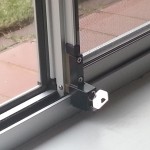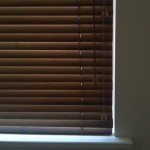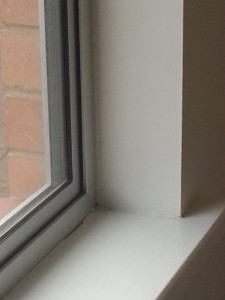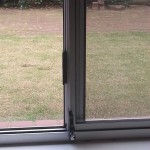What you Need to Know about Recess Fitted Blinds
Blinds are a simple, usually cost effective product. Fitting them inside the window recess is a popular choice for many people. Like anything though, it is not a game for new players, as there are many things that can prevent your blind from fitting, or working properly once it is installed.
Different Types of Blinds
There are many types of blinds available – Roller Blinds (Holland Blinds), Roman Blinds, Vertical Blinds and Venetian blinds, to name a few. Each type of product has its benefits and likewise will be unsuitable in some situations. This may be due to the way your window opens or because there is too little room in the recess to securely fix your chosen product. When selecting the type of blind that you wish to use it is important to know your main reasons for wanting a blind in the first place.
Considerations
Privacy
Some products only provide complete privacy when the blind is completely down or closed. Do you need to leave room to incorporate a second product that will offer you day time privacy?
Key Locks

Keyed Window Lock
Key locks protrude into the available space in a window reveal and are often overlooked when measuring. Depending on the product you are installing and the depth of the window recess, a key lock may prevent the product operating properly, or may rub on your blind, marking it and wearing it over time. Many times people leave the keys in the locks for convenience, which exacerbates the problem. With some products (like roller blinds) they can be manufactured so the fabric hangs from the front of the roller at the top, thereby freeing up more space.
Window Size
All blinds have size limitations in width, drop or both. This may affect your choice of product. In addition each product comes with its own idiosyncrasies – eg. Roller blinds should not exceed proportions of 1:3 (ie. the drop should be no more than 3 times the width, or the blind is highly likely to roll up crooked).
Degree of Blockout (darkness)

Light ‘bleed’ around a Venetian Blind
Some blinds create larger gapping around the edges of the blind than others, which can allow a greater degree of light into the room than you may imagine possible, or find acceptable.
Is your Window Square?
The gapping around the edges of blinds will also accent any irregularities in the window frame (or recess) and may have the effect of making the blind appear crooked (even when it is perfectly level & straight). Products that have less gapping (eg Roman Blinds) may even rub on one side of the frame if the window is quite uneven.

Window Reveal
Tiles in the Window Recess?
Be aware that tiles in the recess of a window may completely change your requirements. The product must fit into the reveal at the top (where it is fitted) and also fit between the tiles at the bottom. This may result in a finished that is not acceptable to some people.
Window Reveal
This is the recess of the window space. It is the frame that is built around a window and can be made out of timber, Gyprock or plastered brick. It leaves a space between the internal face of the wall and the glass and can vary from a small 3cm up to even 30cm in older homes. Some products require more room than others to enable them to be fitted into a recess.
Do your windows open Inwards or Outwards?
There are many types of windows and some designs can prevent the use of a recess fitted window blind. Some windows open inwards from the bottom, sides or the top, which may prevent you from ever being able to open your windows.

Window Mullion
Window Mullion
This is a vertical bar between the panes of glass in windows and gives strength to the window. It can be designed to be quite large (particularly in high wind areas), is sometimes obtrusive and will often make it impossible to fix a window blind in the recess (due to its size and the lack of remaining space in the recess.)
At Healthcare Interiors we love sharing with you hints and tips for everything from creating perfect window coverings, to addressing your clients Privacy needs and creating fit for purpose, well decorated Health Care and Aged Care spaces.




